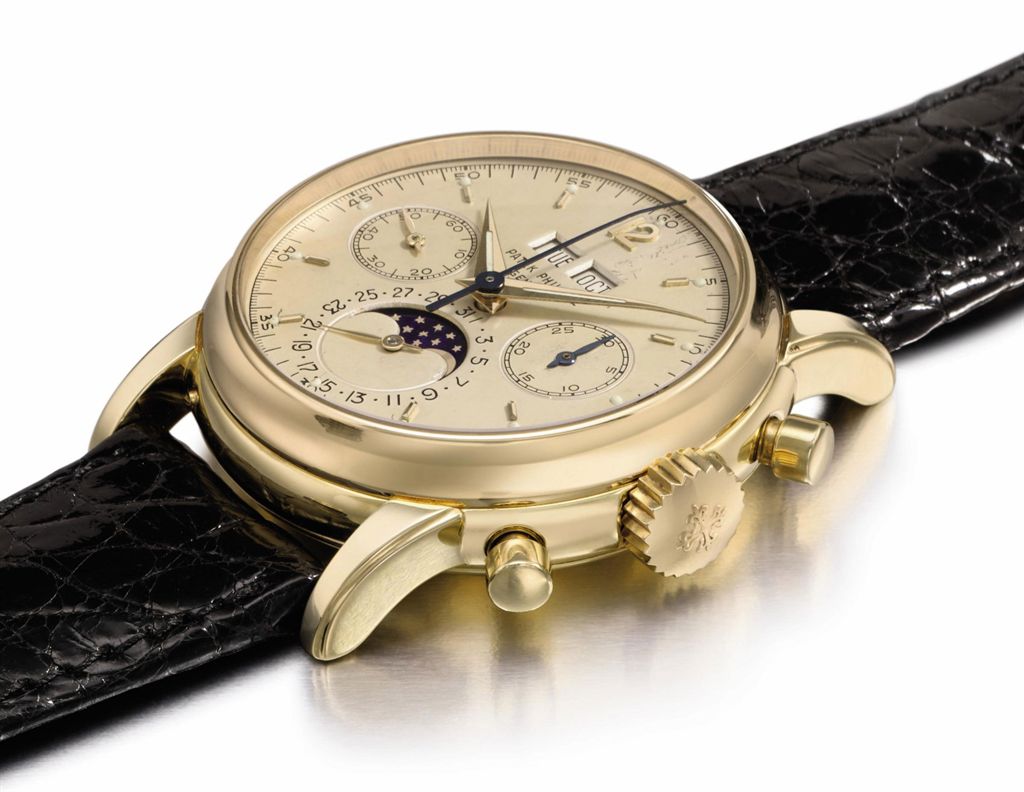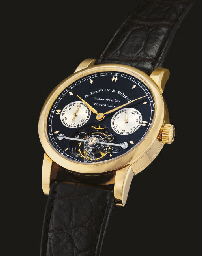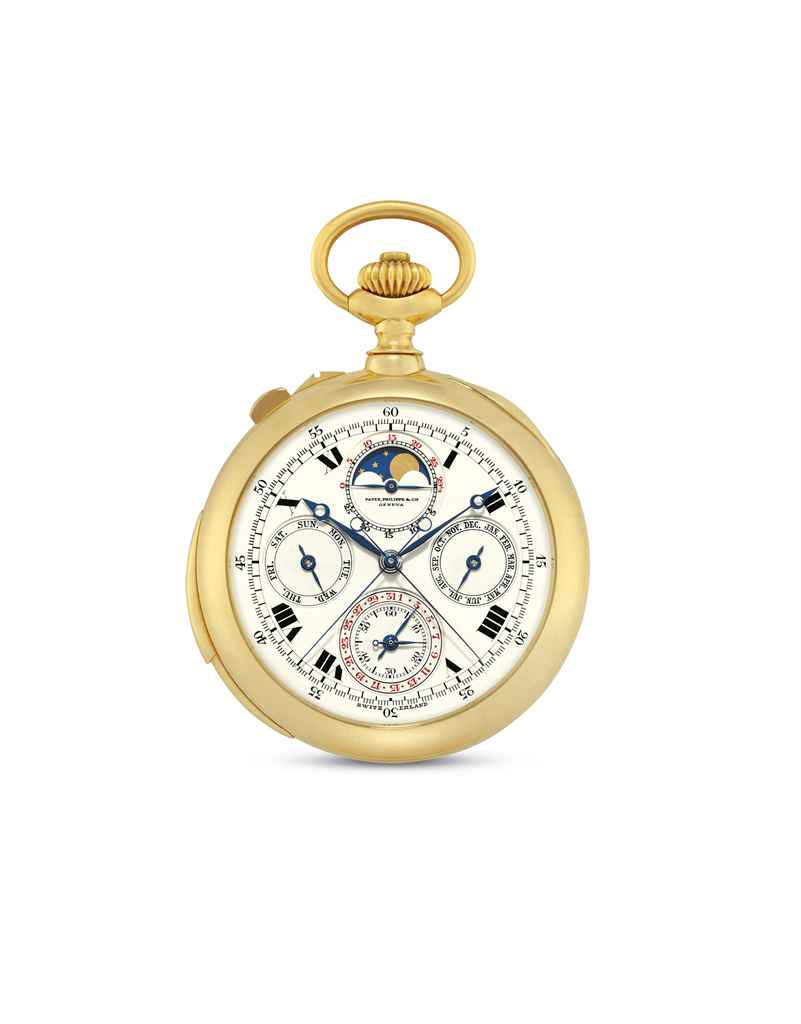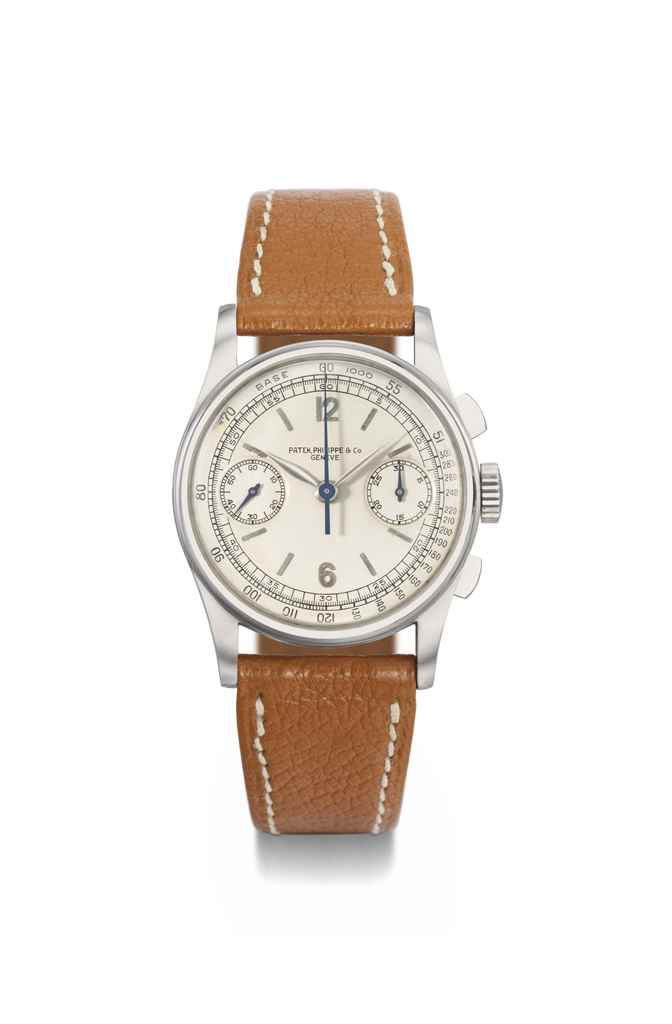A fine and rare George I silver mounted ebony grande sonnerie striking table clock with pull-quarter repeat and alarm Andrew Dunlop for Daniel Delander London, circa 1720 The substantial eight large diameter knopped and finned (centre two latched) pillar triple fusee movement with plates measuring 8.5 by 7.5 inches and chiming the quarters on a nest of six graduated bells followed by full hour strike on a further larger bell every fifteen minutes, with trip quarter repeat, verge escapement regulated by short bob pendulum and alarm sounding on the hour bell wound via pulley mounted on the fine herringbone bordered Ho-Ho bird inhabited foliate scroll engraved backplate centred with figural scene of Daphne pursued by Apollo beneath grotesque male mask with pronounced whiskers issuing from one of the leafy scrolls, the 7.75 inch brass break-arch dial with silvered alarm setting disc, herringbone engraved calendar and shaped false bob apertures and applied scroll-bordered silver signature plate engraved Dan. Delander, London applied over engraved cartouche Andr. Dunlop, LONDON to upper margin of the matted centre within silvered Roman numeral chapter ring with fleur-de-lys half hour markers and Arabic five minutes to outer track, the angles applied with cast silver mask and scroll pattern spandrels beneath arch with Hours & Quarters/Silent All/Hours Alone selection dial flanked by conforming silver mounts, the inverted bell top case with generous hinged cast silver handle to the fillet edged superstructure flanked by heavy shouldered finials above front door with raised complex mouldings to the glazed dial aperture beneath conforming fine foliate scroll engraved and pierced silver upper quadrant fret apertures, the sides with further shaped silver sound frets over break-arch glazed windows, the rear with door incorporating arched scroll-pierced ebony sound fret over rectangular glazed panel, on shallow cavetto moulded skirt base with cast silver squab feet, 48cm (19ins) high excluding handle. Daniel Delander in recorded in Loomes Brian Clockmakers of Britain 1286-1700 as born in London around 1677-8 to Nathaniel and Rebecca Delander. He was apprenticed in 1692 to Charles Halstead but was later transferred to Thomas Tompion gaining his Freedom of the Clockmakers' Company in 1699. Delander is initially thought to have worked from Devereux Court later moving to a house 'between the two Temple Gates', 'near Temple Bar' in 1712. Daniel Delander died in 1733 and is believed to have been succeeded by his son Nathaniel Delander who gained his Freedom of the Clockmaker's Company in 1722. Daniel Delander was a fine and inventive maker who very much followed in the footsteps of his former master, Thomas Tompion His work often demonstrates a refined approach with a great deal of consideration given to the proportions, detail finish and technical specification of the movements. Delander was never one to let fashion overtake him, always being at the cutting edge with regards to design and use of materials. He is perhaps best known for his exquisite small walnut precision longcase clocks with duplex escapements made during the 1720's as well as the silver mounted grande sonnerie table clock formerly in the Rous Lench Collection which is illustrated in Dawson, Percy G., Drover, C.B. and Parkes, D.W. Early English Clocks on page 411, Plates 585-6. Andrew Dunlop is recorded by Loomes as working in Aberdeen until around 1700 before moving to London where he worked from Spread Eagle Court, Grey's Inn. He joined the Clockmakers' Company in 1701 and took in Thomas Hague as an apprentice in 1719 followed by his son, Conyers, in 1725. He is thought to have died in 1732 and was succeeded by his son. The work of Andrew Dunlop is described in Maxwell-Irving, A.M.T ANDREW DUNLOP, C.C. 1701-32 (see ANTIQUARIAN HOROLOGY Vol. XV, No. 1 pages 36-46) where particular focus is given to his watches which are described as being of the 'finest quality'. The movemen
A fine and rare George I silver mounted ebony grande sonnerie striking table clock with pull-quarter repeat and alarm Andrew Dunlop for Daniel Delander London, circa 1720 The substantial eight large diameter knopped and finned (centre two latched) pillar triple fusee movement with plates measuring 8.5 by 7.5 inches and chiming the quarters on a nest of six graduated bells followed by full hour strike on a further larger bell every fifteen minutes, with trip quarter repeat, verge escapement regulated by short bob pendulum and alarm sounding on the hour bell wound via pulley mounted on the fine herringbone bordered Ho-Ho bird inhabited foliate scroll engraved backplate centred with figural scene of Daphne pursued by Apollo beneath grotesque male mask with pronounced whiskers issuing from one of the leafy scrolls, the 7.75 inch brass break-arch dial with silvered alarm setting disc, herringbone engraved calendar and shaped false bob apertures and applied scroll-bordered silver signature plate engraved Dan. Delander, London applied over engraved cartouche Andr. Dunlop, LONDON to upper margin of the matted centre within silvered Roman numeral chapter ring with fleur-de-lys half hour markers and Arabic five minutes to outer track, the angles applied with cast silver mask and scroll pattern spandrels beneath arch with Hours & Quarters/Silent All/Hours Alone selection dial flanked by conforming silver mounts, the inverted bell top case with generous hinged cast silver handle to the fillet edged superstructure flanked by heavy shouldered finials above front door with raised complex mouldings to the glazed dial aperture beneath conforming fine foliate scroll engraved and pierced silver upper quadrant fret apertures, the sides with further shaped silver sound frets over break-arch glazed windows, the rear with door incorporating arched scroll-pierced ebony sound fret over rectangular glazed panel, on shallow cavetto moulded skirt base with cast silver squab feet, 48cm (19ins) high excluding handle. Daniel Delander in recorded in Loomes Brian Clockmakers of Britain 1286-1700 as born in London around 1677-8 to Nathaniel and Rebecca Delander. He was apprenticed in 1692 to Charles Halstead but was later transferred to Thomas Tompion gaining his Freedom of the Clockmakers' Company in 1699. Delander is initially thought to have worked from Devereux Court later moving to a house 'between the two Temple Gates', 'near Temple Bar' in 1712. Daniel Delander died in 1733 and is believed to have been succeeded by his son Nathaniel Delander who gained his Freedom of the Clockmaker's Company in 1722. Daniel Delander was a fine and inventive maker who very much followed in the footsteps of his former master, Thomas Tompion His work often demonstrates a refined approach with a great deal of consideration given to the proportions, detail finish and technical specification of the movements. Delander was never one to let fashion overtake him, always being at the cutting edge with regards to design and use of materials. He is perhaps best known for his exquisite small walnut precision longcase clocks with duplex escapements made during the 1720's as well as the silver mounted grande sonnerie table clock formerly in the Rous Lench Collection which is illustrated in Dawson, Percy G., Drover, C.B. and Parkes, D.W. Early English Clocks on page 411, Plates 585-6. Andrew Dunlop is recorded by Loomes as working in Aberdeen until around 1700 before moving to London where he worked from Spread Eagle Court, Grey's Inn. He joined the Clockmakers' Company in 1701 and took in Thomas Hague as an apprentice in 1719 followed by his son, Conyers, in 1725. He is thought to have died in 1732 and was succeeded by his son. The work of Andrew Dunlop is described in Maxwell-Irving, A.M.T ANDREW DUNLOP, C.C. 1701-32 (see ANTIQUARIAN HOROLOGY Vol. XV, No. 1 pages 36-46) where particular focus is given to his watches which are described as being of the 'finest quality'. The movemen















Try LotSearch and its premium features for 7 days - without any costs!
Be notified automatically about new items in upcoming auctions.
Create an alert